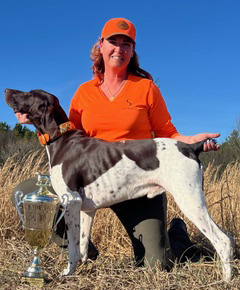I’ve never been a fan of telling someone that they had to do something a particular way.
While my beloved may laugh and disagree with that statement, it’s mostly true. I certainly have suggestions as to how something should be completed or carried out but it’s not the only way. That’s why I cringe when I hear someone saying that you HAVE to use a particular shooting method for success.
What if I don’t like that method or I’m not as proficient in it as I am at other methods? Is that really the ONLY method that will yield an “X”? This conversation occurs frequently on a skeet field. Why?
Breaking Down the Game
The three main clay games include trap, skeet and sporting clays. There are several off-shoots of all those games including bunker trap, helice, 5-stand, FITASC, etc. This article will concentrate on the main clay games as to be vested in the full listing of optional games would require far more real estate than my monthly column allows.
My columns tend to reflect what I’m experiencing in my students’ lessons and hunts. Lately, I’ve had quite a few skeet shooters, past and current, that are more interested in sporting clays.
The game of skeet utilizes a high house on the left, a low house on the right and a half-moon of tiles that the shooter will rotate through, finishing up on the 8th tile in the middle of the field. The clay is “calibrated” each day to make sure the speed and trajectory are within set parameters, 46mph for high house and 48mph for low house.
The NSSA has a page on their website dedicated to the proper use of a radar gun to establish and maintain those parameters. The target also must fly through a hoop in the middle of the field within set parameters.
In other words, skeet is a very measured game. At least until the wind blows.
I encourage students to stretch out beyond a single methodology. Nature is an unknown and unforgiving variable. It would really suck to practice on partly sunny, light wind days just to find yourself in a bright, sunny day with 20mph winds on competition day! This is also exactly why maintained or sustained lead is not one of my preferred methods. Under “sterile” conditions, it’s great and you can certainly use it successfully.
Maintained lead requires the shooter to see a particular distance between the bird and barrel from the beginning of the swing, usually measured in barrel widths, and maintain that distance to a designated break point, pulling the trigger and breaking the bird.
One big issue I have with maintained lead is you are teaching shooters to be distracted. By measuring off the barrel, you are not allowing total focus on the target. This will fail when the “sterile” conditions give way to the weather.
Some of my skeet shooters probably just fell over or at least called me a naughty name. It’s true though. I’ve stood behind plenty of skeet shooters, and they have utilized more than just maintained lead to break birds but swore they didn’t.
Adding Tools to Your Toolbox
You want to match the method to the game. Sporting clays allows you to use a varied assortment of methodologies while trap and skeet prefer just a couple methods.
Want to get a lot better about being able to break a true pair on the skeet field? Learn how to utilize swing through and take that first bird much sooner allowing for a smoother transition and easier acquisition of the second target. I’ve also watched students be very successful with straight line intercept and with pull away.
Don’t be bashful about practicing different methods. Relish the opportunity to expand your skill set and add more tools to your tool bag. This will come in super handy on a windy or rainy day. I tend to use three methods for the majority of my shots and will occasionally throw in a fourth dependent on shadows, break point, etc.
No matter what clay game you love to play or how you love to play the game, always share those moments with a friend or family member.
Kate Ahnstrom, owner of Virginia Shooting Sports is a certified, professional instructor of the Paragon School of Sporting, pro staff Syren/Caesar Guerini, resident pro Orapax Hunting Preserve, Artemis ambassador for Virginia and field staff member of the Sisterhood of the Outdoors. Her tireless dedication to her students’ success is obvious in each and every lesson.



